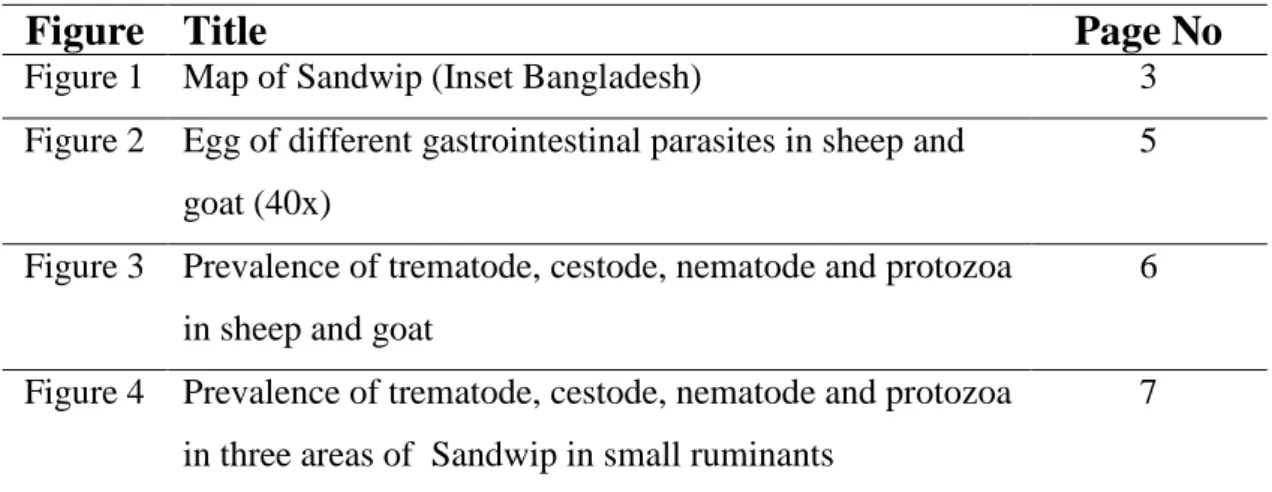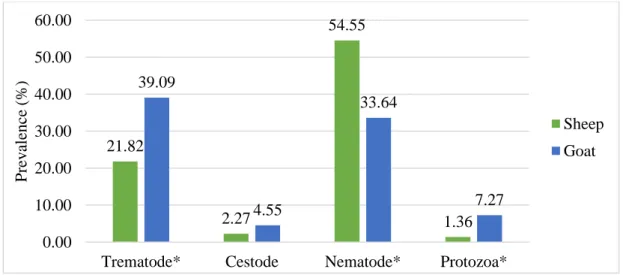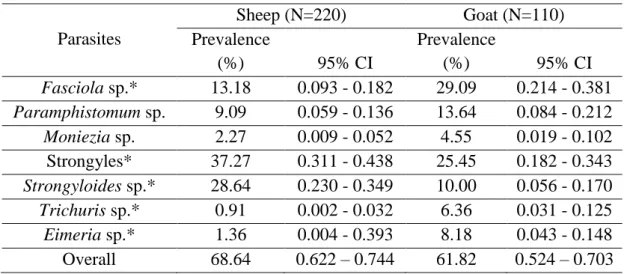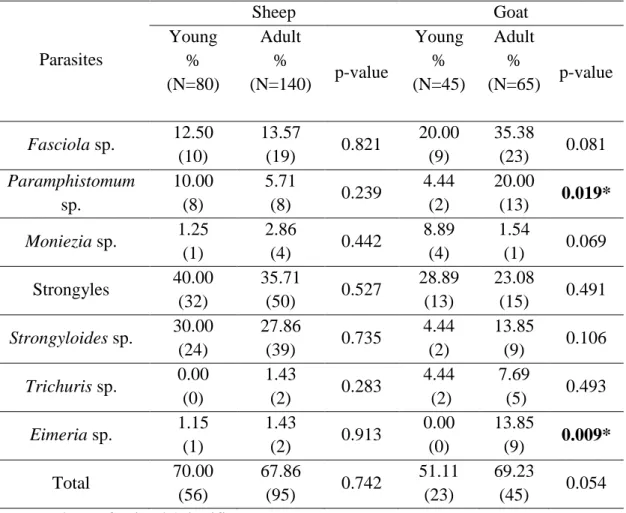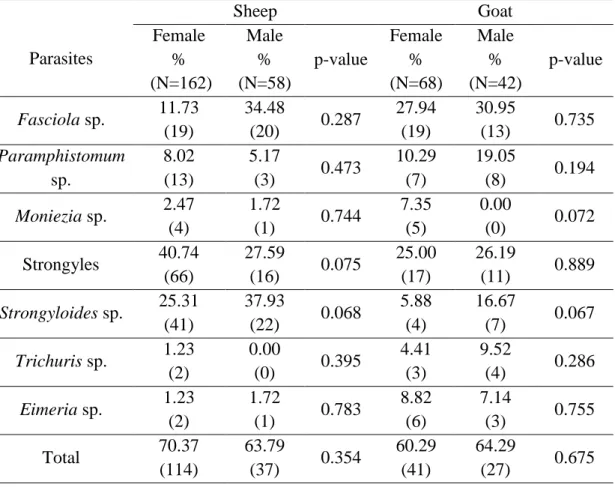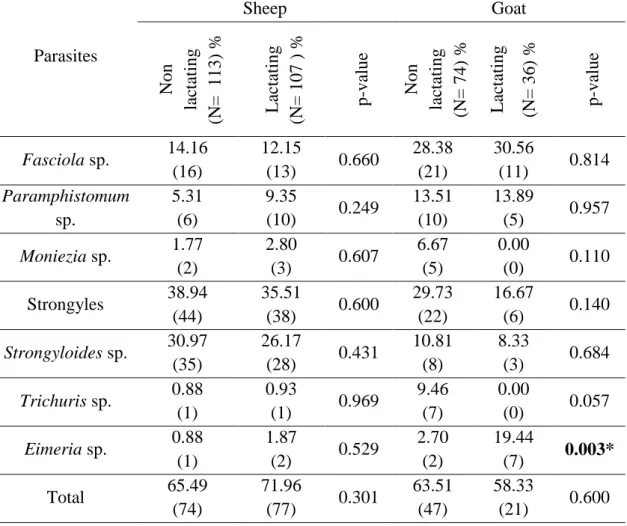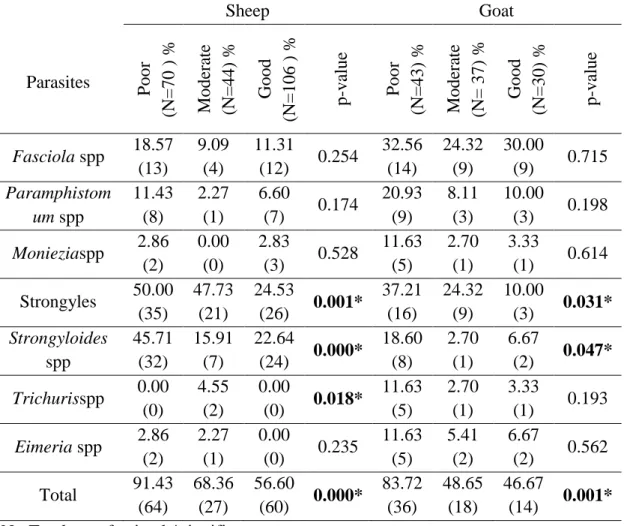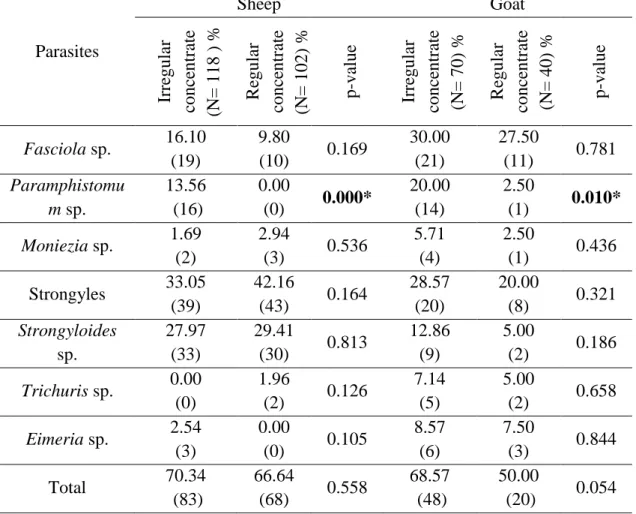Gastrointestinal parasitic infection is considered to be one of the major problems in small livestock farming (eg sheep and goats) in Bangladesh. The present study was undertaken to investigate the prevalence of gastrointestinal (GI) parasite infection in ruminants (sheep and goats) and associated risk factors (eg, three areas (Bauria, Magdhara and Santoshpur) of Sandwip Island, Chattogram, Bangladesh. From June until July 2019, a total of 330 fecal samples were taken using the random sampling technique, of which 220 were sheep and 110 were goats.
Seven types of gastrointestinal parasites (Fasciola sp., Paramphistomum sp., Moniezia sp., Strongyles, Strongyloides sp., Trichuris sp. and Eimeria sp.) were identified of which Strongyles (37.27%) was higher in sheep and Fasciola sp. The incidence GI parasites showed that poor health condition animals (88.50%) were significantly more susceptible than the moderate (55.56%) and good health animals (54.41%). It was also observed that dewormed animals (>3 months interval) (70.23%) were significantly more prone to parasitic infection than the dewormed animals (≤3 months interval) (59.13%).
The current study was fresh and we recommended further studies for molecular detection of such diseases which will help to take necessary preventive measures.
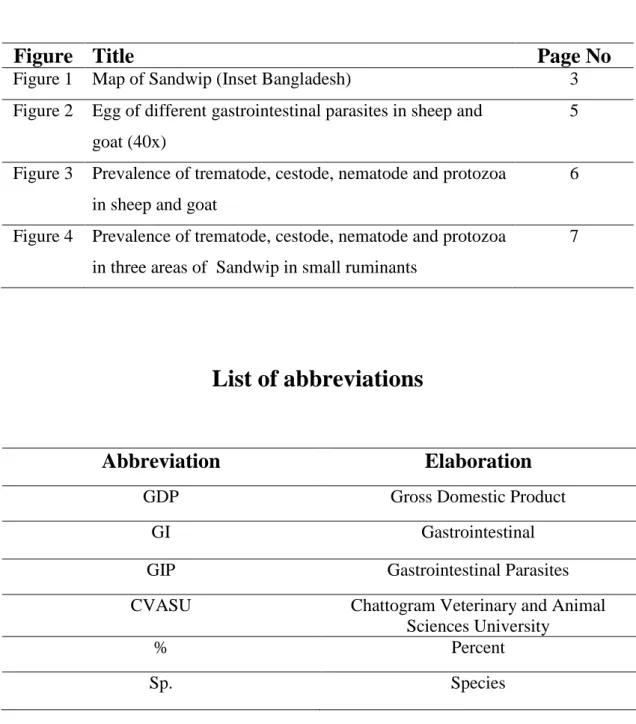
Introduction
2 | P a g e measures and reduces disease resistance, which can ultimately lead to higher mortality (Radostits et al., 1994). Several risk factors related to host and environment play an important role in the initiation of GI parasitic infections. Environmental factors include agro-ecological conditions, husbandry practices such as housing system, deworming intervals and pasture management; it largely determines the type, incidence and severity of various parasitic diseases (Badran et al., 2012).
Other risk factors such as host species, animal sex, age, body condition and breed/genotype, parasite type and worm population intensity influence the development of gastrointestinal parasitic infections (Tariq et al., 2010). . Due to its agro-ecological conditions, this island is very promising for small-breed farming. Given the impact of parasites on economic losses in livestock, it is important to take action to identify the root cause of parasite infestation in the area.
A proper understanding about the epidemiology of GI parasitism is a prerequisite for the rational design of effective preventive and control measures against these dreaded GI parasitic diseases (Rajarajan et al., 2017).
Materials and Methods
- Study area
- Study design and sampling strategy
- Sample collection and preservation
- Laboratory examination
- Statistical analysis
4| Concentrate feed group P a g and those given irregular concentrate feed were grouped into the irregular concentrate feed group. Animals that were demoralized with an interval of ≤3 months were grouped as regularly demoralized animals and more than this interval were considered as irregular animals. After collection, the samples were transported to the Department of Pathology and Parasitology, Faculty of Veterinary Medicine, CVASU.
The direct staining, flotation and sedimentation methods described by Urquhart et al. 1996) were performed to screen positive samples. Data were exported from MS Excel-2013™ to STATA™ 15.1 (Stata Corporation College Station, Texas) for the Chi-Square test.
Results
- Overall prevalence of gastrointestinal parasitic infection in sheep and goat
- Area wise prevalence of gastrointestinal parasitic infections in sheep and
- Age specific prevalence of gastrointestinal parasitic infections in sheep and
- Sex specific prevalence of gastrointestinal parasitic infections in sheep and
- Lactation-wise prevalence of gastrointestinal parasitic infections in sheep
- Nutritional status related prevalence of gastrointestinal parasitic infections
- Feeding practice related prevalence of gastrointestinal parasitic infections
- Deworming status related prevalence of gastrointestinal parasitic infections
While, it is interesting to note that in goats the prevalence of gastrointestinal parasites was higher in males (64.29%) compared to females (60.29%), while in sheep the opposite result was found (Table 3). Non-lactating sheep and goats appear to be more infected with Strongyles and Strongyloides sp. Nutritional status-related prevalence of gastrointestinal parasitic infections in sheep and goats in sheep and goats.
Feeding practices related incidence of gastrointestinal parasitic infections in sheep and goats in sheep and goats. Present study further revealed that animals reared on irregular concentrate (69.68%) showed higher prevalence of GI parasites than reared on regular concentrate (61.97%). Deworming status-related incidence of gastrointestinal parasitic infections in sheep and goats in sheep and goats.
Individually, sheep and goats showed similar results, but statistical significance was not found in sheep (Table 7).
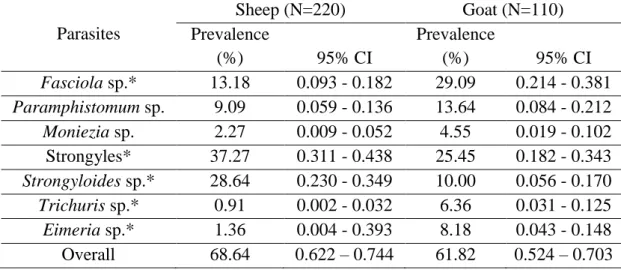
Discussion
In contrast, a previously published article reported a higher prevalence of nematodes in goats and a higher prevalence of protozoa in sheep (Islam et al., 2017). However, this study has differences in the prevalence of GI parasites with the aforementioned studies, which can be attributed to geographic locations, climatic conditions necessary for the development of free life stages of different parasites. The overall prevalence of GI parasites in Bauria and Magdhara was close and Santoshpur showed the lowest GI parasite prevalence.
Lower prevalence of GI parasites under intensive management system has been reported by previously published research (Iyad et al., 2012). There are no recent data available on the prevalence of parasitic infections in any of the Sandwip areas. In this study, the gender of the animal did not show any significant association with the prevalence of GI parasites. 2017) also found no significant association between genders with the prevalence of GI parasites.
An investigation documented a higher prevalence of GI parasites in sheep and goats on Sandwip Island, Chattogram. Prevalence of gastrointestinal parasitic infections in different existing breeds of goats in different districts of Bangladesh. Prevalence of gastrointestinal parasites in sheep and goats in and around Rawalpindi and Islamabad, Pakistan.
Prevalence and diversity of gastrointestinal parasites in small ruminants under two different cropping systems in the Jenin district of Palestine. Prevalence of gastrointestinal parasite infections of small ruminants and associated risk factors in selected districts of Bale zone, southeastern Ethiopia. Epidemiology of gastrointestinal helminthiasis of small ruminants in selected areas of North Gondar zone, Northwest Ethiopia.
Prevalence and risk factors of gastrointestinal nematode infections in small ruminants in Tullo District, West Harerghe, Ethiopia. Prevalence of protozoan and helminth internal parasite infections in goat and sheep flocks in Poland. Cross-sectional epidemiological investigation of the prevalence of gastrointestinal parasites of small ruminants in Sullah upazilla of Sunamgonj district, Bangladesh.
Prevalence and risk factors of gastrointestinal parasitic infections in small ruminants in the Greek temperate Mediterranean environment. The author wishes to acknowledge the immeasurable mercy and deep kindness of the Almighty “GOD”, the highest authority and supreme ruler of the universe, which enables the author to successfully complete the work.
